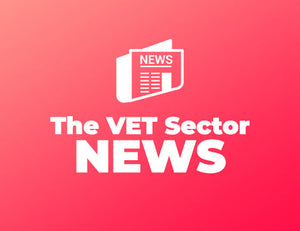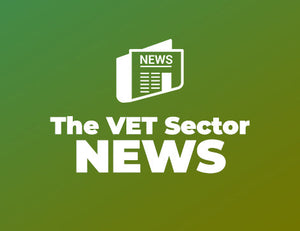
Training and assessment strategies - why you should have a clear roadmap!
SUKH SANDHUTraining and assessment strategies - why you should have a clear roadmap!
When it comes to training, there are many factors that contribute to the effectiveness of the training. However, one of the most important factors is how effective and efficient your training and assessment strategy is.
There are a number of key considerations in training and assessment strategies including but not limited to:
- Learner experience
- Learner engagement
- Quality learning and assessment outcomes
The goal of this roadmap is to provide a guide for quality training. It provides practical strategies for effective learning, assessment, and evaluation.
To create the ultimate learning course, you need to understand how your learners learn best. You need to tap into their interests, goals, styles of learning, and more to give them the best chance of success. This requires careful planning at the beginning of your course development process. This roadmap will help you identify what types of activities will engage your learners and provide them with a rewarding experience that will keep them coming back for more!
A Training and Assessment Strategy (TAS) is the approach of, and method adopted by, an RTO with respect to training and assessment designed to enable learners to meet the requirements of the training package or accredited course (Glossary, Standards for RTOs 2015).
The Training and Assessment Strategy (TAS) is a high-level view of a program that guides the learning requirements and the teaching, training and assessment arrangements of a VET qualification. It is a “how-to” guide that defines and explains the process of developing, delivering and managing a training program.
The Training and Assessment Strategy (TAS) is also called a Learning and Assessment Strategy (LAS), Qualification Delivery and Assessment Strategy (QDAS) or simply; a helicopter document. We strongly suggest you name your document according to the terminology and words mentioned within the Standards for Registered Training Organisations (RTOs) 2015.
The Training and Assessment Strategy (TAS) is used to convey information such as;
- The qualification (if applicable) or unit of competency training product codes and titles
- Requirements to enrol in the course (set by the RTO)
- The core and elective units of competency in the course and a rationale
- Details of the training product and alignment with the qualification packaging rules
- Prerequisites (pre-existing knowledge and skills) to enrol in the training product (as per the training package)
- Details of the training organisation and contact person
- Any clustering (grouping) of units
- The learner cohort/ training group (description of employment status, academic background, domestic or international, related industry experience)
- The mode and method of training delivery
- The mode and method of assessment
- Entry and exit points
- Pathways to, from and employment
- Timeframes for delivery and assessment
- The volume of learning and amount of training
- Information regarding work-placement requirements, if applicable
- Information on how training and assessment is going to take place
- Details of staff qualified to deliver and assess the training
- Equipment, facilities and resources required
- Explanation and outline of industry consultation
- Explanation and outline of how industry feedback has contributed to changes in training and assessment, facilities and resources, training and assessment skills of trainers and assessors
- How the program has been validated
- The sequence of delivery of units according to a priority order
- Review and approval processes for training and assessment strategies to both staff and regulators (in the case of nationally recognised training).
This information is initially constructed to form an overarching strategy that will allow the training organisation to validate that it possesses the organisational capacity to deliver the qualification; giving thought to any specific venue, access to equipment as well as qualified staff; both from a vocational and training and assessment perspective.
The Training and Assessment Strategy, therefore, outlines the macro-level requirements of the learning and assessment process.
The Training and Assessment Strategy tool or template can be developed using a Word document (.docx). It is an active document and should be modified and updated to match what, where, when and how the training organisation is delivering a training product.
How auditors use the training and assessment strategy
The auditors make sure the strategy provides the framework to deliver a quality training product. Their main focus stays on:
- Where the training will be delivered
- How the training will be delivered
- What the method of the course delivery is
- What resources and/or support services are provided to the student
- Who is delivering the training and any skill-gaps
- How clear are entry and exit requirements
- How clear the instructions and information for trainers and assessors are when using the strategy
The regulatory body can ask you to provide a compliant training and assessment strategy at any time before, during or after an audit or any regulatory activity such as at the time of addition to scope application etc.
You must develop a training and assessment strategy before you start delivering training. The strategy should be validated to ensure it is “fit-for-purpose”. You need to develop training and assessment strategies when you are planning to deliver a course/training product.
You must have a fit for purpose training assessment strategy for:
- each course and/or training product
- each delivery mode (classroom-based, online, workplace delivery etc)
- each learner cohort
- each location
- or any other variation in teaching, learning, assessment and support arrangements
Where any variations occur in training and assessment you must provide a modified TAS. A common situation occurs where a training and assessment strategy has been developed for one learner cohort, however, the training organisation is asked to deliver to a very different cohort. For example, a TAS was initially developed to deliver training to mature students with substantial industry experience with a shorter delivery time frame and assessment methods that utilise the candidates’ prior experience- or application to the workplace. If the RTO’s new learner cohort has little to no experience, the TAS will not be fit for purpose.
There is also no “single size” template for a TAS. All variations must be correctly recorded through a customised or new training and assessment strategy. The training organisation must consider:
- How the revised or updated training and assessment strategy provides a clear framework for delivering a quality training product or course
- Support needs and requirements to deliver a training product
- How the course delivery suits the learner cohort or alternatively, referring the opportunity to another provider if the cohort does not meet their business model.
In our next editions, we will discuss:
- What should be included in a training and assessment strategy (TAS) template
- How to complete a training and assessment strategy (TAS) template
- Review and manage training and assessment strategy (TAS) tool
Can a training and assessment strategy be used for different learner cohorts?
A simple answer to this question is “no”. The regulatory requirements require the training provider to ensure they have employed suitable and effective training and assessment practices after evaluating and assessing the needs of each of their learner. You can certainly categorise the learners, according to their preferences, needs and requirements into a separate learner cohort but then you must design a learning and assessment strategy for each of your learner cohort.
You can offer learners a learning experience that is unique to the cohort they belong to by categorising them into smaller groups based on the category they fall into. You can separate and organise discussion topics by cohorts so that participants only communicate with people from their own group. You can design course material in such a way that different cohorts of learners receive different assessments or training materials designed and prepared to meet their individual learning and training needs and requirements.
Regulatory guidelines related to this matter are:
Standards for RTOs 2015:
Clause 1.1
The RTO’s training and assessment strategies and practices, including the amount of training they provide, are consistent with the requirements of training packages and VET accredited courses and enable each learner to meet the requirements for each unit of competency or module in which they are enrolled.
Clause 1.2
For the purposes of clause 1.1, the RTO determines the amount of training they provide to each learner with regard to:
- the existing skills, knowledge and the experience of the learner
- the mode of delivery
- where a full qualification is not being delivered, the number of units and/or modules being delivered as a proportion of the full qualification.
Clause 1.3
The RTO has, for all of its scope of registration, and consistent with its training and assessment strategies, sufficient:
- trainers and assessors to deliver the training and assessment
- educational and support services to meet the needs of the learner cohort/s undertaking the training and assessment
- learning resources to enable learners to meet the requirements for each unit of competency, and which are accessible to the learner regardless of location or mode of delivery
- facilities, whether physical or virtual, and equipment to accommodate and support the number of learners undertaking the training and assessment.
Clause 1.4
The RTO meets all requirements specified in the relevant training package or VET accredited course.
Clause 2.2
The RTO:
- systematically monitors the RTO’s training and assessment strategies and practices to ensure ongoing compliance with Standard 1
- systematically evaluates and uses the outcomes of the evaluations to continually improve the RTO’s training and assessment strategies and practices. Evaluation information includes but is not limited to quality/performance indicator data collected under clause 7.5, validation outcomes, client trainer and assessor feedback and complaints and appeals.
Let us understand this concept using some practical real-life examples.
Example 1:
The training organisation has the opportunity to offer training through different training delivery modes such as online, workplace, distance, classroom or blended (combination of two or more delivery modes). However, the training organisation will not be able to use the same strategies, resources, equipment, and materials for all the different delivery modes. The same condition applies to the training and assessment strategies as well. Online learners might need access to learning management system, discussion forums, interactive training sessions, online meetings and so on when traditional classroom learners may need face to face, live interactions with trainers and assessors, set time and set location for training and learning activities, physical distancing, different sets of equipment and training materials. Therefore, you will not be able to design a single strategy that can meet the requirements of these completely different kinds of learner cohorts.
Example 2:
Another example is for learners who may or may not require prerequisite learning and assessment criteria before enrolling into a course. There are several courses where students are required to have adequate and sufficient knowledge, skills and understanding to enrol into the course. Without meeting these fundamental enrolment and admission requirements, which can be set by the training product, a regulatory body, at the state or federal level or by the training organisation, the learners should not be able to enrol, study and complete a course. You will therefore require two separate sets of training programs, one for the learner cohort who can commence training after demonstrating they meet the admission and enrolment criteria and another one for learners who must complete the prerequisites before enrolling into a course. This example also includes learners who need to improve their English proficiency skills before they can enrol to complete a training program, completing a training course before enrolling into a pathway program, completing a hands-on employment training program or work—experience for a certain time period and so on.
Note: Some of these requirements can be co-requisite (must be studied at the same time of completing other components of the training and assessment) and others are prerequisites (must be successfully completed before enrolling into the training program).
Example 3:
We discussed this example in part 1 as well but thought to include it again to ensure the readers understand why we need to develop separate training and assessment strategies to meet the needs of the different learner cohorts.
For example, a TAS was initially developed to deliver training to mature students with substantial industry experience with a shorter delivery time frame and assessment methods that utilise the candidates’ prior experience- or application to the workplace. If the RTO’s new learner cohort has little to no experience, the TAS will not be fit for purpose.
There is also no “single size” template for a TAS. All variations must be correctly recorded through a customised or new training and assessment strategy.
What are the different learner cohorts?
- The learner cohorts can also be based on a number of other factors such as:
- The location where training and assessment will be delivered is it online, classroom, workplace, blended etc.
- The facilities, equipment, materials, support services and resources required to deliver the training.
- Skill gaps identified in the learner cohorts or expected pre-requisite knowledge, skills and work experience required to enrol and complete the course
- The course duration and timings and arrangements to cater for these needs.
- Course entry and exit requirements
- English language proficiency requirements
- Support needs and requirements of each learner
- Disability, demographics, degree, dialect, difference
- Aboriginal or Torres Strait Islander, first in the family to attend university, non-English speaking background.
- Multicultural, mindset, motivation, morals
- Employment status of the learners
- Reason for enrolling into the course
- Relevant industry and work experience in the specific stream
- Course delivery structure and sequence
- Recognition of prior learning and recognition of current competencies
- Duration of the training course
- Other possible variations for learners with different learning and assessment needs and requirements
Note: This is not an exhaustive list and is written for reference purposes only.
In our next editions, we will discuss:
- What should be included in a training and assessment strategy (TAS) template
- How to complete a training and assessment strategy (TAS) template
- Review and manage training and assessment strategy (TAS) tool
RECENT POSTS





